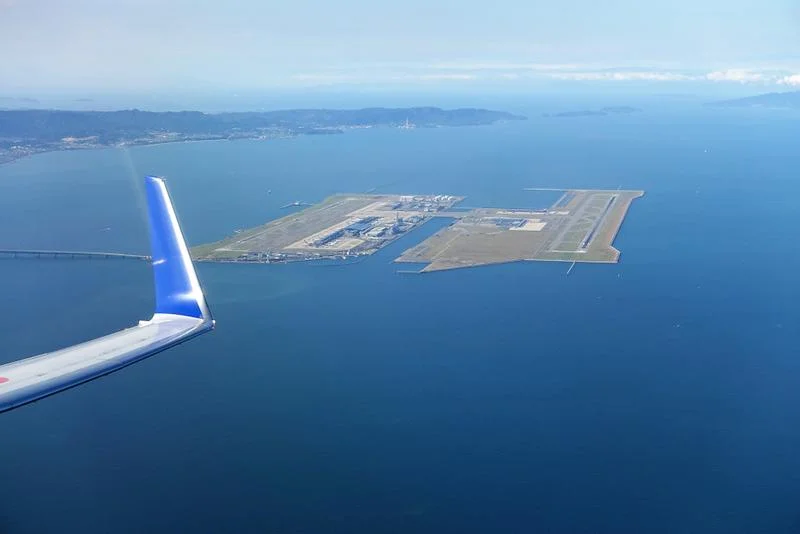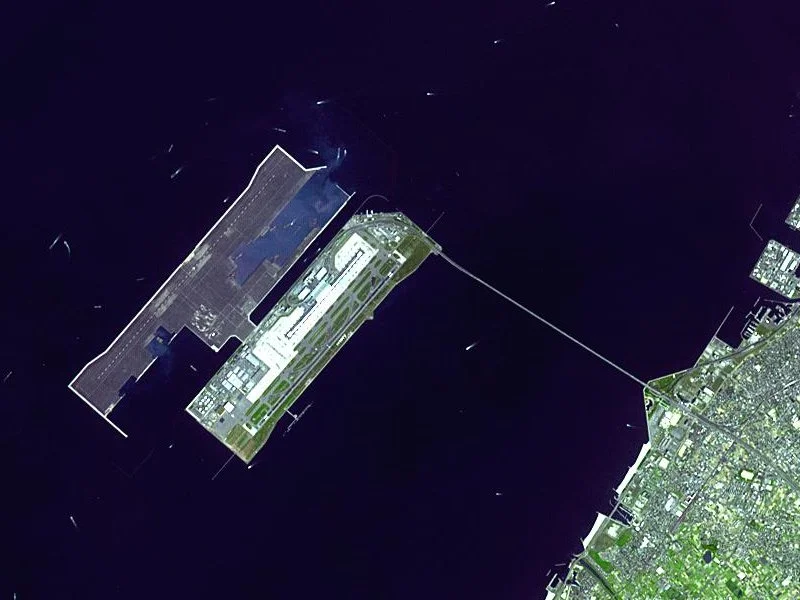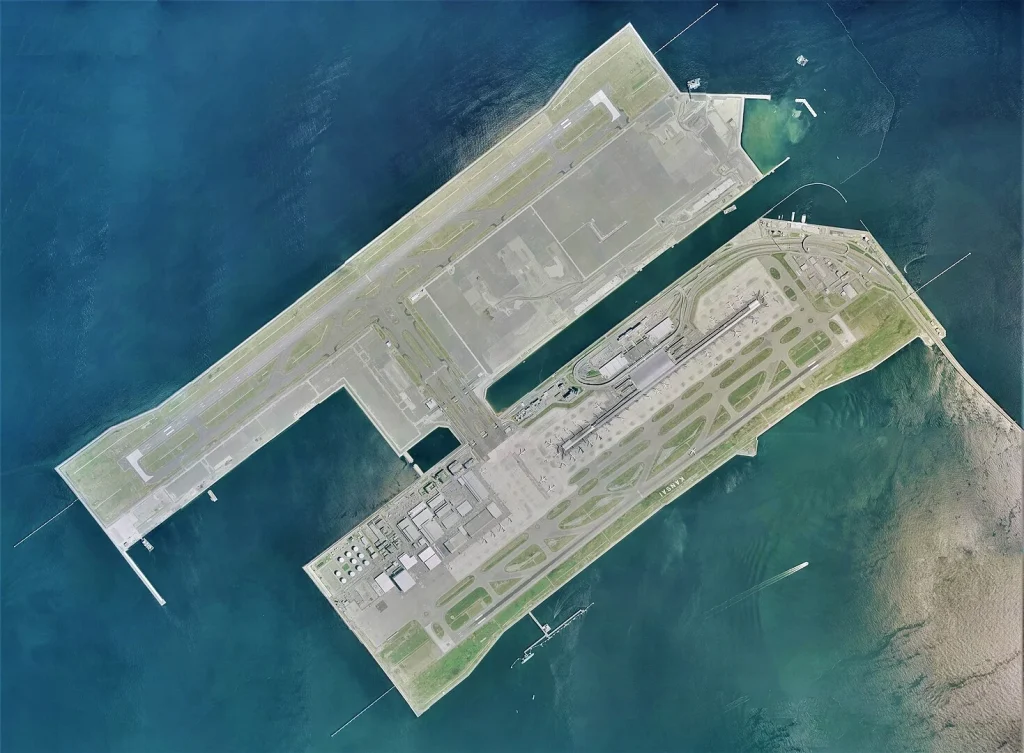Japan's trailblazing $20,000,000,000 offshore airport could be underwater by 2056 as it keeps sinking at an alarming rate
Published on Nov 21, 2025 at 5:31 PM (UTC+4)
by Daisy Edwards
Last updated on Nov 24, 2025 at 12:19 PM (UTC+4)
Edited by
Emma Matthews
Japan has a trailblazing $20,000,000,000 offshore airport in the middle of the sea, but it could be underwater by 2056 as it keeps sinking at an alarming rate.
Kansai International Airport was once celebrated as one of the greatest engineering feats on the planet.
Built on artificial islands in Osaka Bay, it pushed the boundaries of what an airport could be, and showed what it’s like to build in the sea.
Three decades later, that innovation is colliding with a dangerous reality.
EXPLORE SBX CARS – Supercar auctions starting soon powered by Supercar Blondie
Japan’s offshore airport could be underwater by 2056
Japan has an offshore airport full of airplanes located in Osaka Bay, called Kansai International Airport.
The airport was designed to settle slowly, but the seafloor beneath it sank far faster than anyone predicted.
Engineers expected around eight meters of subsidence over 50 years, but instead, more than 12 meters disappeared in just a few years.
The soft clay foundation beneath the artificial islands compressed like a sponge under the airport’s immense weight, and even advanced safeguards couldn’t stop the drop.

Construction teams installed 2.2 million vertical sand drains to force water out of the clay, but the sinking continued at an alarming speed.
At one point, the airport was dropping almost 19 inches, or 50 centimeters, every year.
Around $150 million went into reinforcing seawalls and lifting structures with hydraulic jacks, and that slowed the lowering to roughly 4 inches, or 10 centimeters, annually.
Even so, uneven sinking creates new stresses across the runways and terminals every year.

It was so innovative, but it’s sinking at an alarming rate
Engineers warn that if current trends continue, parts of Kansai could fall below sea level by 2056.
That would put one of Japan’s most important international hubs at risk of becoming the Atlantis of airports.
Millions of passengers rely on the airport each year, and even small shifts in its foundations can trigger major issues.

For now, Kansai remains fully operational, but the fight to keep it above water is constant.
What was once a landmark achievement in offshore building is now a stressful race against time.
DISCOVER SBX CARS: The global premium car auction platform powered by Supercar Blondie
Daisy Edwards is a Content Writer at supercarblondie.com. Daisy has more than five years’ experience as a qualified journalist, having graduated with a History and Journalism degree from Goldsmiths, University of London and a dissertation in vintage electric vehicles. Daisy specializes in writing about cars, EVs, tech and luxury lifestyle. When she's not writing, she's at a country music concert or working on one of her many unfinished craft projects.




